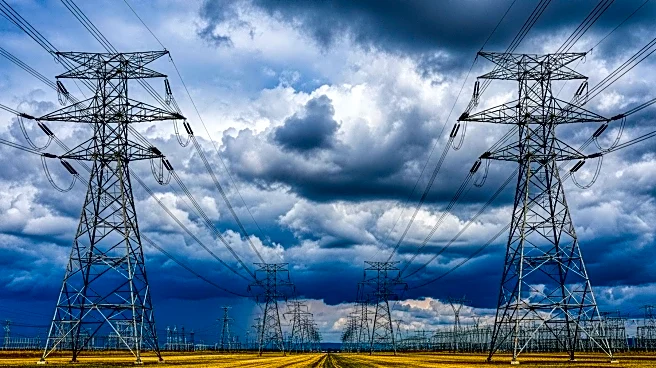What's Happening?
PJM Interconnection's capacity market auction for the 2025-2026 delivery year has cleared record-high prices, reaching $269.92/MW-day, a significant increase from the previous year's $28.92/MW-day. This surge is driven by unprecedented load growth, primarily from data centers and artificial intelligence operations. The demand for electricity is expected to grow by 25% by 2035, according to S&P Global forecasts. The rising prices have brought attention to the need for flexible energy solutions, such as demand response programs, which offer alternatives to costly new generation.
Why It's Important?
The sharp increase in PJM capacity prices underscores the challenges facing the U.S. electricity grid as demand outpaces supply. This situation highlights the importance of developing flexible energy solutions to manage load growth effectively. Demand response programs can provide cost-effective alternatives to building new power plants, helping to balance supply and demand during peak periods. The rising prices may impact consumers, businesses, and policymakers, prompting discussions on energy strategy and infrastructure investment.
What's Next?
As PJM enters an era of load growth, stakeholders will need to explore innovative solutions to address capacity challenges. The focus may shift towards enhancing demand-side flexibility and integrating renewable energy sources. Policymakers and industry leaders will likely engage in discussions to develop strategies that ensure grid reliability and manage rising costs. The evolution of the energy market will require adaptive approaches to meet future demand.
Beyond the Headlines
The transformation of the U.S. electricity grid reflects broader trends in digitalization and changing energy dynamics. The integration of renewable resources and demand response programs will be crucial for adapting to new load profiles. The capacity crisis highlights the need for a diverse mix of energy resources and the importance of flexibility in grid management.











